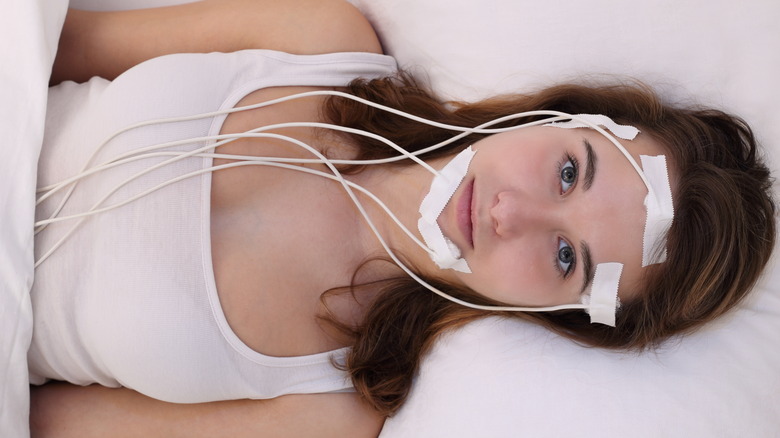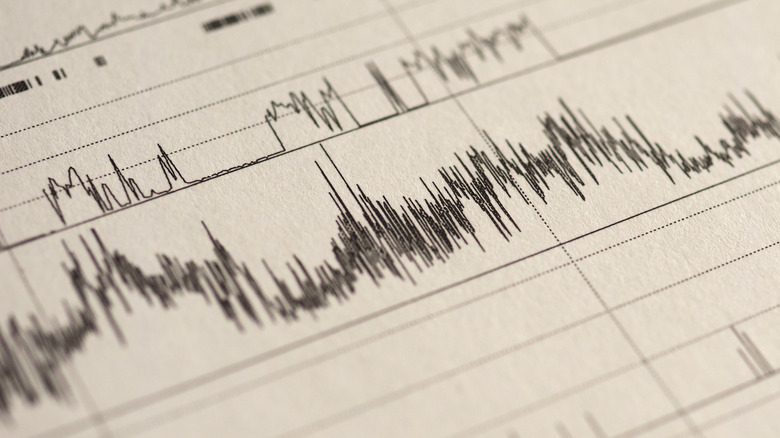This Is What Really Happens When You Get A Sleep Study Test
The Centers for Disease Control and Prevention (CDC) reports that around one-third of American adults don't get enough sleep. Sometimes, this is because of a busy schedule. Other times, it is a result of sleep disorders, which are more common than you might think. Around 10-30% of American adults struggle with chronic insomnia (via the Journal of Family Medicine and Primary Care). According to Johns Hopkins Medicine, approximately 5% of Americans have restless leg syndrome, which often makes it difficult to fall asleep and stay asleep. Meanwhile, the American Academy of Sleep Medicine notes that roughly one-quarter of adults between the ages of 30 and 70 have sleep apnea, which can interfere with both duration and quality of sleep.
Sleep disorders are serious. According to the National Institutes of Health (NIH), sleep deficiency can lead to accidents, reduced work performance, and health problems.
Fortunately, treatments are available for sleep disorders, but of course, the first step to getting treated is to get diagnosed. A sleep study, also known as polysomnography, is one way to diagnose sleep disorders, says the National Library of Medicine.
What happens during a sleep study
As Verywell Health points out, sleep studies are important because self-reporting isn't always accurate. A polysomnography records your bodily functions as you sleep or try to sleep.
For a polysomnography, you will typically arrive at a special sleep center with a comfortable bedroom reserved just for you (per the National Library of Medicine). As you lie in bed, monitors will be attached to your body to record your breathing, heart rate, and movements during sleep. In addition, electrodes will be placed on your chin, scalp, and the outer edges of your eyelids. These will be used to record your brain activity and how long it takes for you to fall asleep and enter REM sleep. As you sleep, polysomnography technologists will observe you through a low-light video camera (via the Mayo Clinic).
Alternatively, instead of going to a sleep center, the National Library of Medicine notes that you may be able to get a sleep study device in your home to diagnose sleep apnea. Regardless, a person has normal test results if they never or rarely stop breathing, and if they have normal brain waves and muscle movements during sleep. Otherwise, they may be diagnosed with a sleep disorder.


